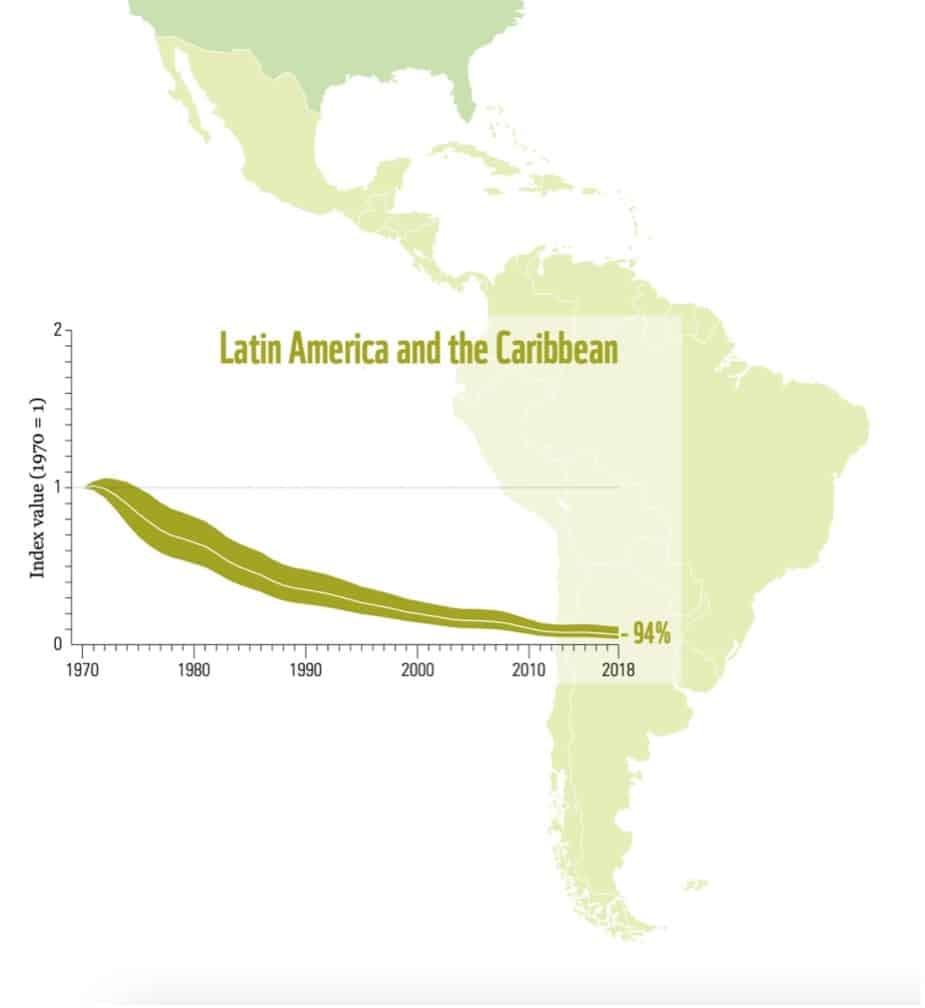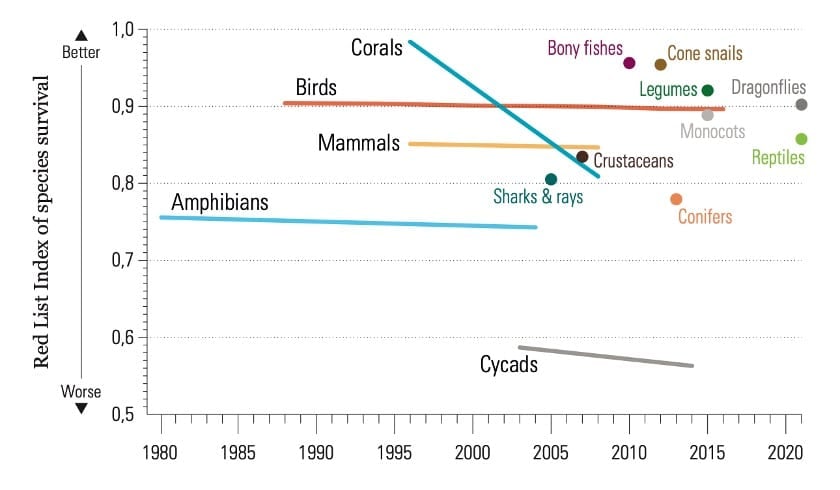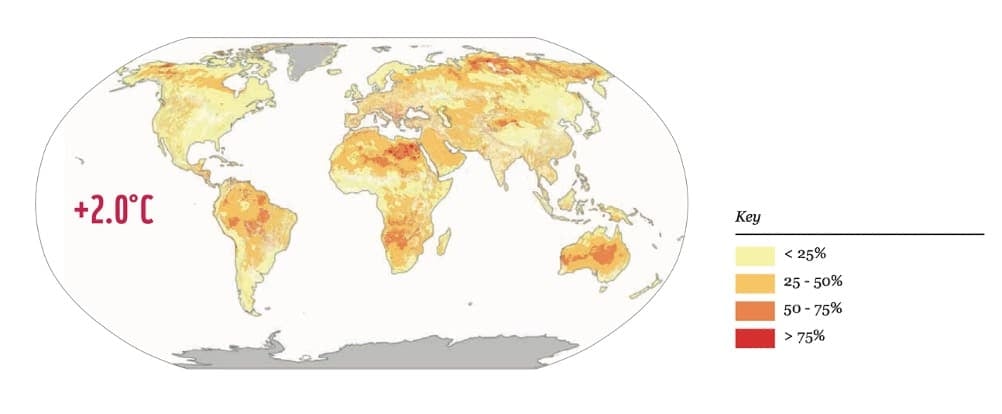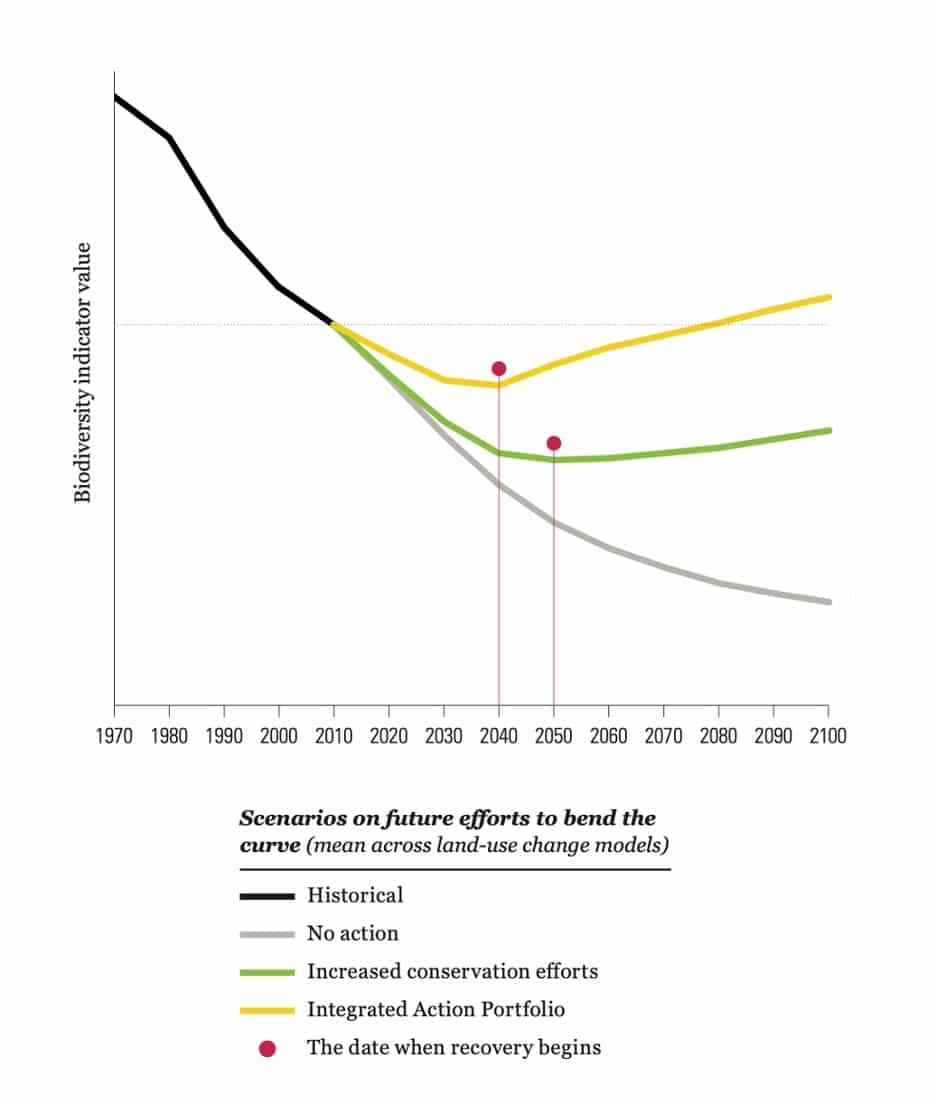(CN) — The planet is facing a double emergency of climate change and biodiversity loss, according to a new report by the World Wildlife Fund (WWF) that found a 69% decline in worldwide wildlife, with Latin America registering the deepest regional decrease of 94%.
Human-induced pressures on the planet are accelerating a nature crisis that is threatening the extinction of one million plants and animals, according to the report.
“The message is clear and the lights are flashing red,” said Marco Lambertini, director general of WWF International. “We are finally beginning to understand the deepening impacts of the interlinked climate and nature crises, and the fundamental role biodiversity plays in maintaining the health, productivity and stability of the many natural systems we and all life on Earth depend on.”
Based on its Living Planet Index that calculates average trends in wildlife population size, the decline spans across the populations of 32,000 species of mammals, birds, fish, reptiles and amphibians from between 1970 and 2018. The World Wildlife Fund said it is the most comprehensive study on the changes of the planet's ecosystem to date.

Every region in the world registered declines in biodiversity: 18% in Europe and Central Asia, 20% in North America, 55% in Asia and the Pacific and 66% in Africa.
Of all species, freshwater fish populations are shrinking the most, declining by 83%, as rivers, lakes and wetlands dry up and become increasingly polluted. These environments are not only deeply biodiverse but essential for human survival.
Freshwater, marine, and land ecosystems are key resources for food security, energy production, medicines, and industry. Wetlands, grasslands, forests, mangroves and oceans also play vital roles in the regulation of climate, air quality, and natural hazards.
With the analysis of 23,271 species — from amphibians and birds to mammals — the World Wildlife Fund has generated global threat maps that correspond to six threats to biodiversity: agriculture, logging, hunting and trapping, pollution, invasive species and climate change.

The strongest driver of biodiversity loss is agriculture, with the expansion of land use for crops and livestock damaging natural habitats. This also reinforces what the World Wildlife Fund describes as the second main driver of biodiversity loss: climate change.
“Land-use change is still the biggest current threat to nature, destroying or fragmenting the natural habitats of many plant and animal species on land, in freshwater and in the sea,” the World Wildlife Fund report states. “However, if we are unable to limit warming to 1.5 degrees Celsius [34.7 degrees Fahrenheit], climate change is likely to become the dominant cause of biodiversity loss in the coming decades.”
The target of the Paris Agreement, signed in 2016, is limiting the increase in global temperature by between 34.7 degrees Fahrenheit and 35.6 degrees Fahrenheit of pre-industrial levels (1850-1900). This is the point, the group says, at which climate impacts become particularly harmful for people. According to the World Meteorological Organization, there is a 50% likelihood that we will hit the 34.7 degrees Fahrenheit threshold between this year and 2026.
Without change, the consequences are compounded. “Some of them are already here,” said Lambertini, “the loss of lives and economic assets from extreme weather; aggravated poverty and food insecurity from droughts and floods; social unrest and increased migration flows; and zoonotic diseases that bring the whole world to its knees.”

We have already seen the loss of certain species. The Bramble Cay melomys rodent, native to a small island off the coast of Papua New Guinea, went extinct in 2019. The golden toad that hopped among the mountains of Costa Rica disappeared in 1989, as the days between normal fog conditions became longer.
There are also an increasing number of critically endangered species, from the beluga fish killed to make caviar to the whitetip shark that has seen its numbers plummet by 95%.
The World Wildlife Fund identified high-priority areas where all species were at particular risk, including the Himalayas, the east coast of Australia, the Guinean forests where 96% have been cleared, the Northern Andes in South and Central America and the Amazon basin.
The Amazon is the world’s largest rainforest and critical for the planet’s climate system, storing 200 billion tons of carbon and holding 20% of the world’s fresh water. However, one-fourth of the Amazon is under a state of “advanced disturbance” that the World Wildlife Fund defines as deforestation, forest degradation, and recurrent fires.
From 2004 to 2012, deforestation was decelerating — mostly from less activity in Brazil. Since 2013, this trend has reversed with deforestation in Brazil last year reaching the highest levels in 14 years. The fate of the Amazon is at play in this year’s presidential election in that country.
Far-right incumbent Jair Bolsonaro and leftist former president Lula da Silva will go head-to-head on Oct. 30. Deforestation slowed by 82% during Lula’s terms between 2003 and 2010 and he has promised to strengthen regulations and Indigenous land rights if he wins.
Local communities across dozens of countries have defended their rights to a healthy environment and to protect threatened species and ecosystems. They've worked to block offshore oil and gas activities in Argentina due to their effects on marine mammals, protect forests from mining in Ecuador and ban bee-killing pesticides in Costa Rica.
In Peru, the remote mountain town of La Oroya is suing the state at the Inter-American Court on Human Rights after suffering decades of toxic metal contamination from a metallurgical complex.
The UN recognized the right to a healthy environment in July 2022, and that “everyone, everywhere has the right to live in a clean, healthy and sustainable environment,” the report states. “Although not legally binding, the UN resolution is expected to accelerate action.”

In the same way that the Paris Agreement set out a global goal for climate change, the World Wildlife Fund calls for the same ambition for nature. “A plan that clearly sets a measurable and time-bound global goal for nature as the 2016 Paris accord – with the net-zero emissions goal by 2050 — did for climate,” said Lambertini. “We need nature positive by 2030, which in simple terms means more nature by the end of this decade than at its start.”
With the dual goals of net-zero emissions by 2050 and net-positive biodiversity by 2030, this represents “the compass to guide us towards a safe future for humanity, to shift to a sustainable development model,” said Lambertini, who urges world leaders to adopt a nature-positive position at the UN Convention on Biological Diversity (COP15), which is set to take place between Dec. 7 and 19 this year in Montreal, Canada.
Subscribe to Closing Arguments
Sign up for new weekly newsletter Closing Arguments to get the latest about ongoing trials, major litigation and hot cases and rulings in courthouses around the U.S. and the world.









